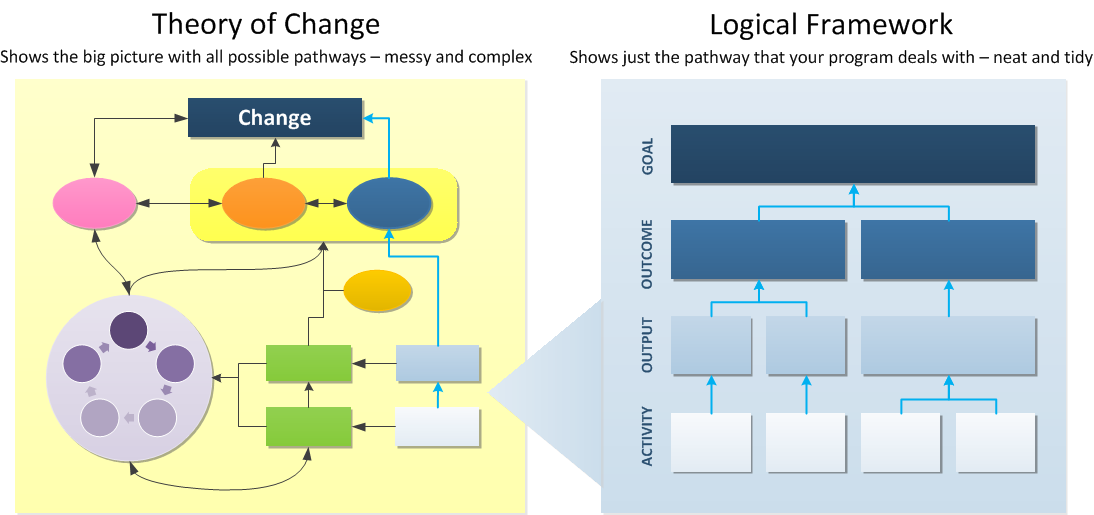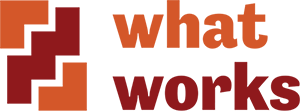LOGIC MODELS AND THEORY OF CHANGE
Frameworks & Approaches
Frameworks & Approaches describe popular ways to gather and make sense of data.
LOGIC MODELS AND THEORY OF CHANGE
Logic models show relationships between:
- Resources – what you have.
- Activities – what you do.
- Outputs – what you produce.
- Outcomes – the results.
Creating a logic model helps all involved think about what they’re doing, what they hope to achieve and what they need to do to get all the important stuff done.
Logic models can also include a:
- Problem statement – why the service or project is needed.
- Goal – the overall aim.
- Assumptions – the basis for the ideas.
- Rationale – information in the model.
Logic Model
-
USEFUL RESOURCES
- The W.K. Kellogg Foundation has published a logic model development guide that explains why you would want to use logic models and how to develop one.
- This site has a page explaining the differences between a theory of change and a logframe, or logic model. It also includes a popular logframe template. It suggests that the main difference between a theory of change and logframe is that the theory of change includes the big (messy) picture, not just the neat, orderly plan for the specific service or project.
- There are several ways to show how you expect a programme to work. See for example this link.
VIDEO RESOURCE
- This video of Dr Paul Duignan provides a brief overview of logic models.
WHEN TO USE A LOGIC MODEL
Logic models tend to be used to plan a new project or service. You can use them however in the plan, implement and review phases.
They are most useful to get people to think through and understand a project.
Logic models demonstrate:
- What goes in – inputs.
- What comes out – outputs.
- What results from it all – outcomes.
They do not necessarily provide evidence that something has been achieved. Nor do they demonstrate the value of the service. They reveal intention, assumptions and rationale behind a project. They link what you meant to happen and what did happen.
Advantages:
- Easy to use – simple format, logical and sequential.
- Builds a common understanding of goals, processes and expectations for resources – lets you easily share ideas, identify assumptions, build your team and communicate.
- Helps you design your service and improve and identify issues that are critical to achieve results and to identify what is no longer relevant to your goal.
- Can explain the relevance of a service in the organisation or community.
- Measures and evaluates the important bits, so it supports data collection.
Limitations
- Services and programmes are not linear; a range of factors influence results.
- A logic model focuses on the expected results, rather than the unintended or unexpected.
- A logic model doesn’t address the questions: “are we doing the right thing?” “should we do this programme?”
Theory of Change
A logic model demonstrates the underlying theory of change.
A theory of change typically:
- Shows the big picture, including issues that you can’t control.
- Shows all the different ways that might lead to change, even if they’re not related to your programme or service.
- Describes how and why you think change happens.
- Describes why you think one way will lead on to another, eg if you think increased knowledge will change behaviour, is that an assumption or do you have evidence to show it is the case?
- Is mainly used as a tool to design and evaluate programmes.
‘Keystone Accountability’s guide for Developing a Theory of Change’ is a resource that goes beyond the basics of Theory of Change development and delves into the importance of context and understanding the environment that you are evaluating in. This is a good resource if you already have a good grasp of Theory of Change as a tool and want to learn more.
Measuring your social impact – Theory of Change

Source Tool4Dev
